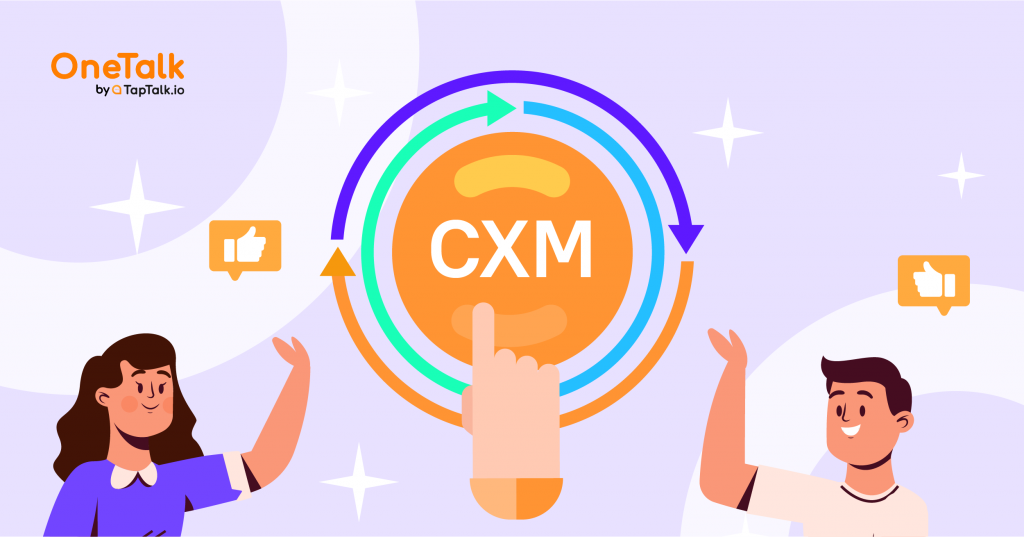
Every business's goal is to sell something to somebody. Whether it is a product, service, or data, for a price, the company has something it offers to its customers. It seems like the point of sales strategies and marketing strategies is the same for that reason, that is to sell the products of services. But by definition, the purposes and methods of sales and marketing strategies are different.
What's the difference between marketing and sales? The difference lies in how close you are to turning a prospective customer into an actual customer.
Marketing includes the methods you use to obtain new leads or prospects into your business. It includes everything that helps increase interest in the goods and services being sold. In order for you to judge which marketing options are cost-effective and deliver results, it should have observable metrics. On the other hand, sales are the process of actually persuading someone to buy your products. It also requires some degree of human contact that convinces a client to become a client. Sales refer to all activities selling goods and services. The person in charge of the sales division has the responsibility of maintaining relationships with prospective clients which ultimately lead to sales. These prospective customers have been guided to you most of the time through marketing efforts.
The marketing strategy's purpose is not to make sales. Instead, it's about meeting prospective consumers and raising their awareness of the goods, services, and company, and the opportunities for them all. Marketing practices are structured to help, but not inherently make sales. This is because not every visitor to your website or company is a good match for your product/service in your target market.
The goal of any sales strategy is fairly simple: to make sales. Although it is a goal, it is so much more complex than that. Sales teams are tasked with maintaining partnerships and leading them to a buying choice with future buyers. A sales strategy can also discuss techniques to transform one-time consumers into return buyers or sources of recommendation.
For example, a marketing strategy is something that applies behind the curtain. Their team does not meet with a customer face to face. You wouldn’t meet with a marketing officer when you visit a store. But, a sales strategy is something that a customer can see. When you go to a store, you will meet some sales promotion girls (SPG) or others. Those SPG are the implementation of a sales strategy.
The marketing strategy generally involves:
The sales strategy generally involves:
Generally, the marketing strategy is set by the CMO (Chief Marketing Officer) or VP of marketing, but it is guided by multiple marketing team members. This is because the marketing team interacts directly with groups, such as product, product marketing, service, and sales, that influence customer.
On the other hand, the sales strategy is set by the VP of sales or the chief revenue officer. Sales executives and new company owners then introduce it. Salespeople typically work on a segment instead of engaging with the whole group that marketing targets. So the sales staff will talk directly to customers or communicate at a time with a few qualified leads.
Both strategies equally have a different person in charge. It's just a different position’s name.
Marketing strategy is a long-term, forward-looking vision and an overarching game plan of any company or business with the underlying aim of recognizing the desires and wishes of consumers to achieve a sustainable strategic edge.
Usually, a sales strategy is short-term. A sales strategy is usually designed later and it draws on the marketing strategy. Depending on if the sales staff is meeting or exceeding sales expectations, you may need to make occasional improvements to this technique.
The scope of work and its duration can also illustrate the difference in sales and marketing. Sales team jobs tend to be short term while marketing teams tend to be more long term.
This is because the marketing team must maintain harmonious relationships with business partners and vendors related to product marketing. Constant contact is required for an effective marketing strategy. Everyone on the team wants to realize how the brand campaign will better meet broader business goals. As well as using instruments such as market models, demographic studies, and competition analysis, the emphasis should also be on promoting brand promise to consumers.
The scope of marketing work also includes market research, public relations, and customer satisfaction. Meanwhile, the scope of the sales team's job is to convince (potential) customers to continue to feel the need for the products you sell.
A good sales strategy draws on the marketing team's efforts by securing individual customers who are most likely to purchase. This is typically so unless a large portion of their prospects is guided by the sales staff. Direct sales departments are busy pursuing prospects, making calls for exploration, qualifying candidates, product or service pitching, developing partnerships, and turning prospects to clients.
The difference in sales and marketing can also be seen from the priorities and work functions of these two divisions.
In terms of work priorities, the difference between these two positions lies in the activity targets. The marketing team's priority is to reach customers and build good relationships with customers so that they can become loyal customers. You can imagine a clear advantage if several large companies become regular customers of the products that your company has.
The more regular customers, the bigger the profit, of course.
Apart from that, these regular customers will be there if the service and response from the sales team also support the quality of the products and customers that have been reached.
The function of the sales team is to accommodate and target customers while helping them meet their needs with the products offered. The difference in sales and marketing in their functions and priorities is precisely what makes them synergize with each other.
| Pros | Cons |
| Promotes Your Business to a Target Audience (You have a better chance of receiving the perfect customer because you know your target) | Hard to Generate a Momentum(For a small business creating momentum may be hard because your brand is still small and not many people know about you yet) |
| Helps You Understand Your Customers(After knowing your targeted customers, you can understand them better) | Cost(Big companies can afford to waste time and money focusing on a marketing strategy that struggles because they can regroup and move on. As a small business owner, though the return on spending on a marketing campaign might be poor, and that means you have spent months to cover that) |
| Helps Brand Your Business(Your marketing strategy isn’t just about boosting leads and converting them into buyers, it’s also about expressing the culture, values, and purpose of your business. By doing a marketing strategy you also help introducing your brand to others) |
| Pro | Cons |
| Strengthens Customer Engagement and Commitment(Salesperson usually interact with their customers and they can ultimately build a stronger connection with customers) | May Lower Brand Awareness(The overuse of some discount discounts can lead consumers to assume that the cheaper price is the normal price, which may cause them not to believe that the quality of the goods correlates with goods from comparable rivals offering less frequent or no price reductions) |
| Quick to Develop(Compared to other types of strategy, some sales strategies can be quickly created and made available within a market) | Distributors Won’t Be Prepared(Some consumer sales strategy require the assistance of distributors (e.g. retailers), but not all distributors can support the sales strategy, particularly if the promotion requires the distributor to do additional work) |
| Help Sells More of Your Product(In cases where stock replacement is needed (e.g. items approaching expiration date; clearing inventory to make way for new models), sales strategy may be used to easily decrease supply.) |
From recognition to purchase, both marketing and sales are integral aspects of the consumer journey. Your business teams need to align with these two strategies, and that means recognizing all points of convergence and divergence. According to Aberdeen Group, sales and marketing alignment can lead to a 32% increase in year-over-year revenue growth.
Communication between your sales and marketing departments is vital to aligning your sales and marketing activities. This means that sales have feedback on the types of marketing material that would be effective, that shared priorities are defined, and that everybody uses the same language and knows the vocabulary of each other.
Sales and marketing roles intersect, even though they are often grouped independently. Enterprises that recognize critical overlap areas may gain more value from their teams by pooling efforts. After all, both sales and marketing share the same objective: to increase sales.
Awareness. An initiative to raise awareness about a product or service is the first step in the sales process. Efficient awareness-building efforts may help a prospect to remember a brand or product name or may guarantee that an organization makes a shortlist for purchase consideration.
Engagement. Engagement efforts draw on an initial marketing strategy to strengthen the relationship of the customer to a brand or product. Marketing resources for interaction can be longer (e.g. whitepaper or video) relative to a more simplistic awareness item (e.g. direct mailer or radio advertisement).
Conversion. Conversion is the vital transformation of a new client from an unknown figure to a recognised leader. In the case of marketing departments, a conversion may be the completion of an online form, the instigation of a webchat, or a phone call to a customer service line.
Retention. And after a buy, a marketing team may help a company develop its repeat customers. Maintaining a marketing role tends to sustain visibility and commitment during sales. This can include email newsletters or webinar invites that help consumers get more value from a product. In particular, the retention role of marketing is important for subscription services.
Follow up. The main sales feature is to follow up on the lead created by the marketing department. Successful enterprises typically create a formal hand-off mechanism such that each marketing-qualified leader receives accurate and prompt follow-up from a sales team member.
Relationship building. The "hard sell" era begins to disappear. Modern sales rely on developing relationships to help establish loyalty between the customer and the seller. Effective salesmen should consider the interests of the purchaser to create a persuasive—but not a persuasive—message to better distinguish the commodity of the business.
Closing. Often salespeople are judged by their willingness to transform leads into buyers. While some may envisage a face-to-face meeting and a handshake as the end of a sale, many companies are now closing deals online or over the phone. This could increase the responsibility for closing the sale to more workers.
Retention. Sales and marketing are responsible for improving customer satisfaction. When checking in with a current customer, a sales staff member may further show an engagement in the future of a long-term customer, not just a one-time deal. Continued efforts to develop good partnerships will help boost satisfaction and contribute to "upselling"—additional purchases outside initial purchasing.
How do the sales and marketing departments accomplish their objectives? Tactics differ depending on the culture of the market and the business. They've improved over time, too.
These are some of the traditional sales and marketing strategies that are at the heart of each practice.
Outbound marketing. Marketing Outbound. Outbound marketing stands for conventional "push" marketing. This covers tv ads, direct mail posters, and cold calls. Outbound marketing strategies are also successful in creating strong demographic recognition. However, some new marketing tactics challenge the capacity of outbound marketing to create compelling, personal marketing messages that establish long-lasting business-customer relationships.
Inbound marketing. Inbound marketing is shifting marketing efforts from "drive" to "pull." The key concept behind inbound marketing is to attract new buyers by designing marketing materials that support users. For example, an investment company can deliver a free retirement planning webinar. Inbound marketing aims to rely first on offering something useful to the customer, rather than having an inward focus on presenting a business message.
Limiting the opportunity. The notion of a "limited-time bid" is popular in retail, but generating a feeling of scarcity is a strategy used in many industries. A limited opportunity can be limited by time (e.g. a decent deal for this month only) or availability (e.g. the last pickup on the lot).
Focusing on pain points. A successful salesperson can determine the benefits of a product or service concerning the needs of a customer. This involves recognizing the day-to-day problems that the customer faces and reflecting on how the product can address these issues. Focus on pain points may often help to develop a friendship by expressing a salesperson's concern about the customer's issue.
Making the assumptive close. The assumptive close is a sales tactic that transforms the "yes" order into a "no." For example, instead of saying, "Do you want to try this service?" a salesperson might ask, "When would you want us to arrange the installation?"
While having the same end goal, marketing and sales strategy are two different things. Marketing advises and draws leads and prospects to your brand, product or service. Sales, on the other hand, deals exclusively with prospects to enhance the appeal of the company's solution to turn prospects into consumers.
There is a lot of pro and cons of both strategies which should take your attention because they will affect the revenue of your businesses.
If your small business is having trouble balancing the marketing and sales strategy, you could always use tools and other solutions. You don’t even need to differentiate between them, you can simply use an omnichannel messaging platform. Using a trusted omnichannel messaging platform will helps you balance it. OneTalk by Taptalk.io as an omnichannel messaging solution can increase your sales, marketing, and support.
OneTalk can help you execute the constant contact that you require to balance marketing and sales strategy. With our ability to integrate multiple messaging platforms, OneTalk has all the features to enhance your business. One of them is Broadcast Message and Start New Conversation. The Broadcast Message feature allows you to send messages to multiple recipients all at once. Your marketing/sales strategy will be more interactive with this feature, sending them multimedia content such as photos, videos, and even pdf files. Meanwhile, Start New Conversation features allow you to do proactive chat and start a new case so your business can reach your customers first. With these and a lot of other features provided by OneTalk, you can easily balance your marketing and sales strategy.
In this pandemic situation, OneTalk, which integrates messenger platforms in one dashboard, can maintain your communication with your employees because you will be able to continuously monitor their work through the Real-Time Agent Activity Tracker feature. This feature will allow you to see in real-time the cases that are being handled by your employees.
Also, OneTalk creates an effective work system in the aspect of corporate communication with customers. With Assignment Rules which have assignment systems for different customers, you can easily share cases with your agents. The Topics feature also allows you or your employees to sort out the topics discussed by the customer so that they can easily categorize them.
Oh wow! Just how much are the features on OneTalk? Well, it seems like a lot, but there are more to be found. You can even utilize the right platform! Other than giving you privileges of integrating multiple messaging platforms, OneTalk also provides you with WhatsApp Business API services to support your line of communication with one of the biggest messaging platforms in the world. Use this to apply your Marketing Strategy and Sales Strategy and increase your sales like never before.
Want to know more, contact our agent to explore all the features we provide for you.

Design is not easy to expand. Design is a system that requires driving elements. It will be just an “empty entity” that must be filled by “something” so its existence is recognized. It has become a huge part of companies to make them stronger and successful in this competitive digital market.
Improving design through work, without setting standards, is a myth. With each new promise, new ideas for color palettes, typography, and patterns emerge in the product, increasing diversity and increasing maintenance costs. Each new employee increases design entropy. There is only one way to stop the growth of this chaos. A commitment to run a design system.
A design system can help by scaling. Design can scale, but it can only scale with design system.
The design system is now very popular. Why? Because it is effective like everyone says it will be. Applying a design system to your business will bring a lot of benefits:
10 Steps to build design system
1. Evaluates current UI inventory and note differences
To start a good design system, it is best if you evaluate what you already have. In this aspect, consider which element will be the best, and which part do you want to replace? Try to find differences and inconsistencies between your products or pages.
A few elements that you need to pay attention are color schemes, how every color is used, Stylistic text choices, photo libraries, icon libraries, UI patterns, page templates, and other graphics.
2. Prepare your team to be onboard
You need a team to implement and manage a design system throughout the product design cycle. For most design systems, teams need front-end designers and developers. Start by identifying the skills you need and then identifying the people who have them.
3. Establish principles and rules for the design system
The design system is a system of values shared throughout the design system. This includes the techniques - CSS in Javascript or something else - that you will use to write your design scheme; How will you distribute the design system; And if you're going to use one of your digital products as a starting point for the system.
4. Color palletes
Color is an important aspect because it can impact all of your work. Decide on the hue and color for each of the colors you use most often, and write down final instructions on how to use them. Of course, this includes your primary brand colors, but also pay attention to your secondary colors. For example, what color is your text? Your link? Special keys? Background?
Be as detailed as possible when writing your code. Check out your own design style to fix any problems you might encounter while testing the color palette in the product UI.
5. Typographic elements
Now, you would want to review and finalize your typographic choices. Design systems can be more technical than static pattern guides, so take advantage of that. Note your preferred text size, spacing, font, etc., as well as any rules about where and when to use it. For example, how big is the section title in your blog post? What fonts do you use for an on-site call-to-action?
Don't ignore subtle details, like line height, font weight, or custom kerning rules.
6. Graphic design assets
The well-designed design system allows you to directly drag and drop visual components into your new prototype. The more graphic design assets you collect in your design system, the faster you can progress your work for future projects.
Don't forget to include any appropriate code snippets or documentation that the developer might need. These small aspects will be useful during the development stage.
Within all your graphic design assets, you will need libraries to implement: icons libraries, photography libraries, illustrations, and branding images.
7. Standardize Other Style Properties
Design decisions also include complementing grid patterns and other characteristics not covered in the previous section, such as spacing. As with the other components of your design system, here, standardization also aims to remove inconsistencies.
8. Build the First Design System Pattern
Don’t focus on building all the patterns in one go, because building design system pattern can be an iterative process. Build it one by one by identifying the best architecture for your pattern library.
9. Run a Sprint Retrospective
Sprints can be a great way to ensure fast learning across teams. All product teams should set up regular retrospective sprints to analyze progress and make necessary improvements.
10. Conclusion
All of the steps mentioned here will provide you with a set of design guidelines that promote a consistent design language. Don't think of a design system as a project. Instead, treat it as an ongoing process that requires rapid iteration.

Every business that relies on websites as a customer engagement platform is always trying to find ways to increase visitors numbers on their website. There are two ways to achieve this𑁋sitting idly and just waiting and answering customer’s questions and complaints when they ask you or show your initiative before your customers reach you. While you ponder which ways are better, you should know that the second option, you can show your initiative before the customer asks for it. This explains how proactive live chat works.
You can definitely pick whatever approach you want, but reaching the customer first before any problems arise to show that you can deal with a potential problem as a result and will be more effective. The customer will get a detailed response and feels valued. So, how is proactive chat explained and how can it grow your business?
What is a proactive chat?
Proactive chat is the ability to target website visitors and then, using curated visual cues and sound effects, deliberately invite those visitors to participate in live chat interactions. In other ways, proactive chat messages are automated messages that invite your site visitors to start a conversation. This feature helps the live chat agent to take the lead, show interest, and willingness to solve customer problems as quickly as possible.
Much like an actual store salesperson, customer support experts invite visitors to talk. Taking the first steps with proactive chat software is now easier than it was years ago. Want to see some proactive chat best practices to use in your business? It's the next stop here.
Proactive chat best practices
Proactive chat is the perfect chance to show customers how much you care. It's a lot more effective to reach out to a client first and show that you can give a solution before problems arise or before complaints come.
There are several tactics that allow you to interact with customers instead of frustrating them. Now let's find out the do's and don'ts of proactive live chat, and pay attention to what you should and shouldn't do to make proactive messages work amazingly:
1. Know your time
For starters, set the message trigger to 1 minute. In general, you don't want to charge visitors all at once, give them time to look around. But how do you know which time is the right one? So, you can check the average time spent on the page using Google Analytics or other similar tools, and determine when a customer is aware of the content but will leave. Next, send a proactive chat message offering assistance.
For example, you see a customer completing an order for one minute. Run a proactive message under 1 minute, saying "Hi! Do you need help with your order? I’ll be happy to answer any questions."
2. Make your proactive conversation personal
With this type of chat, there's no point hiding behind a mask. Show your clients who you are, introduce yourself, and have friendly conversations. Try to avoid common yes / no questions and make sure your conversation is meaningful. You can also configure your messages according to the country, city, or language of the customer's current browser using a dedicated chat engine for that.
3. Keep the conversation specific and relevant
Use two different methods when someone is browsing pricing pages or technical support pages. For example, starting a sales presentation if the customer is facing some technical problem is not the best scenario. The customer is waiting for a solution, not another agreement. Since your goal is to provide service, prioritize customer needs. Choose their preference, and send a proactive message with several options in it.
For example, instead of "Do you need help?" Say "Hey! Need help choosing great leather handbags?"
4. Know your limits
Allow your customers to close chat windows or ignore conversations when they want to. Make sure that your help is adequate and that you don't annoy clients. For example, the message "Hi, I have added 1 item to your cart. Continue to the Payments section.” This message can sound too pushy. Also, don't put flashy live chat windows on every page of the site. Select a few pages instead, make the most of it there.
5. Limit the number of Proactive Messages
There is a trigger that lets you monitor how many preemptive chat invitations you have actually sent. Set it up if you don't want to bombard customers with multiple messages per page. This rule is the "number of preemptive invitations sent" and "the time since the last proactive invitation".
OneTalk offers you some features that allow you to reach customers before problems arise. One of them is Start New Conversation feature that allows you to start a case so that your business can reach your customer first. You can use this feature just by entering your destination number. Practicing Proactive Chat can also be done by another feature by OneTalk, Broadcast Message. You can reach a lot of customers all at once by sending proactive messages. You don’t even need to worry about sending messages that are too long to read, because this feature allows you to preview your messages before you hit send. Reaching your customer through broadcast messages can enhance your performance as a proactive business.
We currently offer 14 days free trial (no credit card required). Let's reach your customers using OneTalk, contact us at sales@taptalk.io, or visit our website for more info!

Dahulu, branding didefinisikan sebagai nama, slogan, tanda, simbol atau desain, atau kombinasi dari elemen-elemen tersebut, yang membedakan satu perusahaan, produk, atau layanan dari yang lain. Saat ini, branding menjadi lebih kompleks dan bahkan lebih penting.
Branding, secara konvensional, adalah praktik pemasaran di mana perusahaan membuat nama, simbol, atau desain yang mudah diidentifikasi sebagai milik perusahaan. Ini membantu dalam mengidentifikasi produk dan membedakannya dari produk dan layanan lain.
Branding penting karena tidak hanya memberikan kesan yang tak terlupakan pada konsumen, tetapi juga memungkinkan pelanggan Anda mengetahui apa yang diharapkan dari perusahaan Anda. Ini adalah cara untuk membedakan diri Anda dari pesaing dan mengklarifikasi apa yang Anda tawarkan yang membuat Anda menjadi pilihan yang lebih baik. Branding dibangun untuk menjadi representasi utama tentang “siapa” perusahaan Anda dan bagaimana perusahaan Anda ingin dilihat oleh pelanggan Anda.
Bagaimana Anda tahu jika brand Anda cukup kuat untuk memberi Anda nilai internal dan eksternal yang Anda butuhkan? Mulailah dengan pertanyaan-pertanyaan di bawah ini.
Selain pertanyaan-pertanyaan di atas, lanjutkan dengan mengetahui betapa pentingnya branding yang baik untuk menciptakan usaha yang sukses. Karena, branding memiliki kaitan erat terhadap kesan dan citra perusahaan, juga berkaitan dengan kesuksesan usaha Anda.
Mengapa branding itu kritikal bagi usaha yang sukses?
Branding memang sangat kritikal bagi sebuah perusahaan, karena dampak pada keseluruhan perusahaan. Branding dapat mengubah cara orang melihat perusahaan Anda, dan dapat mendorong usaha baru untuk meningkatkan branding mereka.
Di bawah ini adalah alasan mengapa branding itu sangat penting untuk usaha yang sukses:
1. Branding dapat meningkatkan niat customer untuk membeli produk
Hal pertama yang membuat branding menjadi kritikal dalam usaha adalah karena Branding dapat membangun kepercayaan customer terhadap produk lewat storytelling. Dengan cerita ini brand bisa memposisikan produknya terhubung kepada target pelanggan. Selain memposisikan produk dengan tujuan yang ingin dicapai pelanggan, brand yang baik juga akan meningkatkan kepercayaan pelanggan terhadap produk, yang pada akhirnya juga akan meningkatkan niat seseorang membeli produk Anda.
2. Meningkatkan penjualan produk melalui branding
Branding sangat berpengaruh terhadap penjualan melalui faktor desain. Desain yang menarik membuat persepsi yang berbeda atas sebuah produk yang nantinya berujung pada pembelian. Ketika seorang pelanggan atau calon pelanggan pertama kali membuat citra dari branding Anda, maka saat-saat penting terjadi ketika mereka memutuskan apakah brand Anda cukup menarik atau tidak untuk digunakan.
3. Branding dapat menambah visibilitas perusahaan
Persaingan dengan kompetitor yang selalu ada membuat perusahaan menambah visibilitas yang menarik agar menangkap perhatian pelanggan. Pelanggan akan mencari lebih dalam mengenai perusahaan Anda atau brand Anda, karena produk atau brand Anda meninggalkan kesan yang lebih diingat, dibanding perusahaan kompetitor lain. Visibilitas ini nantinya akan berkaitan erat dengan penjualan atau sales perusahaan.
4. Memperkuat perusahaan dengan pesan branding
Dengan branding yang menarik, customer akan mudah mendapatkan pesan tentang perusahaan anda. Dengan ini perusahaan memiliki konsistensi terhadap produk atau jasa yang diberikan.
5. Branding yang baik akan menambah pelanggan baru
Selain berkaitan erat dengan penjualan, branding ini juga akan mempengaruhi faktor referal. Promosi dan marketing dari mulut ke mulut atau referal ini akan membantu bisnis. Perusahaan yang paling sukses, kecil dan besar, memiliki satu kesamaan. Mereka telah dengan kuat menempatkan diri mereka sebagai pelopor dalam industri mereka dengan membangun branding yang kuat.
Ketika brand meninggalkan kesan baik dan kesan produk juga berbanding lurus, maka pelanggan baru akan bermunculan dengan rekomendasi pelanggan yang sudah puas akan pelayanan dan produk yang mereka nikmati. Hal ini akan kembali menambah sales atau penjualan perusahaan.
Bagaimana menciptakan branding yang meningkatkan kesuksesan usaha?
Untuk mencapai branding yang dapat meningkatkan kesuksesan perusahaan atau bisnis Anda, Anda dapat menggunakan omnichannel messaging platform yang terpercaya. Brand omnichannel yang terpercaya, OneTalk adalah brand omnichannel yang dapat membantu anda mengembangkan branding perusahaan.
OneTalk, memungkinkan Anda meningkatkan sales, marketing, dan support perusahaan dengan berbagai fitur menariknya. Dengan All-in-one inbox, OneTalk memungkinkan Anda mengintegrasikan beberapa platform perpesanan sekaligus, dan akan meningkatkan customer support yang dibutuhkan pelanggan. Sehingga, pelayanan ini akan menciptakan image brand Anda yang mengutamakan kepentingan pelanggan.
Dengan meninggalkan kesan yang berorientasi pada pelanggan, mereka akan mengingat perusahan Anda sebagai brand yang menyenangkan dan memprioritaskan kenyamanan pelanggan.

There is a clear difference between Customer Experience Management (CXM) and Customer Relationship Management (CRM). To find out, we have to look at the CXM definition and CRM definition.
Customer Experience Management (CXM) is the practice of designing and responding to customer interactions to meet or exceed customer expectations and increase customer satisfaction, loyalty and support.
Meanwhile, Customer Relationship Management (CRM) is a business strategy that optimizes profitability and revenue while promoting customer satisfaction and loyalty. CRM technology enables strategies to identify and virtually identify customer relationships and manage them. CRM software provides capabilities to companies in four segments: sales, marketing, customer service, and digital commerce.
Differences
Customer relationship management (CRM) software tracks sales leads and customer interactions. CRM facilitates the development of relationships for organizations. CRM systems have many advantages, but not all businesses need them.
Customer Experience Management (CEM or CXM) is a broader information gathering process for tracking, monitoring, and managing all interactions between customers and organizations throughout the customer life cycle. Focus on unique perspective insights by digging deeper into the customer experience, listening to the customer, analyzing feedback, understanding the customer's perspective, and optimizing the customer experience.
CRM helps build relationships with your organization. CXM focuses on monitoring and improving the customer experience.
While CRM is more system-centered and captures customer data and processes, CXM takes a more qualitative approach to focusing on customers and making quantitative information more practical.
Value to organization
CRM solutions have been poorly reported over the past few years, but are successful enough as a customer logging system to capture, store, process, and share data for staff management, process efficiency, and business analysis purposes. But of course, this area offers little immediate benefit to customers.
CXM uses software to control the customers and staff who serve them, making it relevant to apply technology to support an overall customer-centered strategy and achieve a competitive advantage. We will shift our focus to providing personal and excellent customer service.
CXM solutions shift the focus from data management to implementing customer information at the right time and place, and can be used to provide a consistent customer experience that better pleases customers.
CXM is more qualitative than quantitative and has the basic features that make CRM information viable and a stronger objective for customer results. If a CRM system struggles to use customer data for practical use when it can be applied to help interact with customers, CXM completes the information journey for customer experience and measurable benefits.
In addition, the CXM solution needs to provide a great customer experience on the channels and devices that customers want to use, such as web, web chat, SMS, mobile, smart apps, email and voice. Fixing these bits will help improve customer satisfaction, retention and response.
Adopting CRM alone does not improve the customer experience. They tend to overdesign, complicate issues, get excited about technology, and forget their original purpose. Without a human touch in the middle, it was just cold, emotionless data.
Even worse, in this digital era, CRM does not have what it takes to store all the important data needed for modern business: activity on websites and mobile apps, emails, push notifications, support tickets, payment systems, and more.
In some ways, CXM aims to provide the last mile of CRM (the intersection of customer knowledge and customer satisfaction), at the right time and place that can be actively leveraged across channels and devices. It has the function of providing customer information. It affects customer experience.
It’s time to improve your business by developing your own CXM. There are some tools that can improve the CXM. One of them is using an omnichannel messaging platform, such as OneTalk by TapTalk.io. With OneTalk, as a trusted omnichannel messaging platform, you can have a lot of features to make your customer’s experience delightful and amazingly fun. OneTalk's omnichannel feature allows your agent to handle multiple customer cases at one time. You can also keep an eye on your agents’ work and drive your sales and marketing up at the same time.
OneTalk enables you to stay on track with data but also gives a human element. Your data is not just some emotionless data, but gathered with qualitative analytics that your agent can add to your analytics. You can achieve this with Disposition features, and many useful features in OneTalk.
This tool will improve your sales, marketing, and support. The other features are a bonus to improve your customer service experience.

During the pandemic, many companies decided to continue their business online. There are various reasons such as maintaining distance, filling their spare time, and so on. Because everything is completely digital, companies need to develop and improve quality for customers so that they always get the best experience.
Through experience, customers get more information than before, so the experience is one of the reasons customers will buy or use your product again.
Now, this is why it is important to understand Customer Experience Management (CEM). According to Gartner, the world's leading research and advisory firm, Customer Experience Management is the practice of designing and reacting to customer interactions to meet or exceed customer expectations and, in so doing, increase customer satisfaction, loyalty and advocacy. The following is an example of customer experience management software that you can use:
Qualtrics will help provide your business with a single source of real-time customer insights to help retain customers. With Qualtrics, you can create, monitor, and manage every experience on one platform and can be accessed anytime and anywhere. In addition, Qualtrics has been used by many entrepreneurs such as Coca-Cola, Emirates, HSBC, and Harvard University.
Clicktale offers tools to monitor and manage every customer experience on one platform and can be accessed anytime and anywhere. They also analyze your customer data to give you the best knowledge about your customer. Examples of business owners using Clicktale are Three (3), ANA Airline, Allianz, dan DELL.
With Freshsales, your team can now use AI-based lead scoring, phone, email, activity retrieval, and more. More or less the features provided are the same as the software mentioned above. Their main features are 360° customer view, seamless communication, in-depth sales analytics via reports, and schedule activity. Examples of entrepreneurs using Freshsales are Tokopedia, Honda, Bridgestone, and cisco.
Now, before you want to use Customer Experience Management Tools, here are a few things to keep in mind when considering customer experience:
Mobile experience and usability are interrelated terms in web or application design. Mobile experience refers to a person's subjective feelings and attitudes when using or interacting with certain products, such as websites or applications via mobile phones. Meanwhile, usability refers to the extent to which a product is effective, easy to use, easy to learn, efficient, error-free, and satisfies users.
If you are looking for customer experience management, make sure their app or website outlook is mobile friendly. According to research on the social media management platform, HootSuite and social marketing agency We Are Social entitled "Global Digital Reports 2020", as many as 338.2 million Indonesians are connected to the internet via their cellphones. This means that it is important for you to pay attention to customer comfort when accessing your app or website via mobile.
Mobile screens are obviously smaller than laptops, so your site layout should be easy to view and use on your phone. It includes a more vertical scrolling layout with clean, easy-to-read typography. In addition, make sure it looks simple and useful for customers, such as there are menu options (example: Home, Search, etcetera.).
Also, don’t upload large files on your app or website. Very large files can hinder the performance of a website and make the website lag.
The user onboarding process (user interaction) is a short interactive tutorial on how the core features of your app or website work. It's that simple, but can be ignored and prevents new customers from leaving your app or website due to confusion.
A good user onboarding process can help you improve app or website user interaction. There are many user onboarding methods such as home pages, email campaigns, push notifications, and others.
An example of the user onboarding process is when you access the app or website, usually, you will contact to register or make an account and do leverage. Then, you can freely access the app or website (example: buying goods). By registering, usually using e-mail, you will often get an email or push notification about a promo. Those two things will attract you to re-access the app or website.
Now then, after learning all this, did you know that there is a Customer Experience Management tools created in Indonesian? TapTalk.io is a company providing chat SDK (software development kit) and Omnichannel Messaging Platform for sales, marketing, and support that allows businesses to interact directly from websites and applications to provide the best experience to your customers, supported by an interface that can be personalized according to the brand image you want to present.
Here are some of TapTalk.io excellent features: All-in-One Inbox, Disposition, Assignment Rules, Case Details, Working Hour and Automatic Messaging, also WhatsApp, Telegram, Facebook Messenger, Twitter DM, LINE, Email, and others all combined in one channel.

CRM and CEM / CXM are essential tools for maintaining business flow with customers. Both are there to optimize customer relationships. But, they are not the same. Similar, but different. To choose the right one, the organization must go beyond the alphabet soup of this tech business application.
What's the difference between CRM and CXM?
Customer relationship management (CRM) software tracks sales leads and customer interactions. CRM facilitates the development of relationships for organizations. CRM systems have many advantages, but not all businesses need them.
Customer Experience Management (CEM or CXM) is a broader information gathering process for tracking, monitoring, and managing all interactions between customers and organizations throughout the customer life cycle. Focus on unique perspective insights by digging deeper into the customer experience, listening to the customer, analyzing feedback, understanding the customer's perspective, and optimizing the customer experience.
In short, both tools optimize customer relationships. How they do this makes all the difference. CRM helps build relationships with your organization. CXM focuses on monitoring and improving the customer experience.
Customer experience management (or CXM) is the practice of the experience of every customer across all touchpoints and departments. A better CXM helps businesses have a better brand impression, retain more customers, and even convert them into brand advocates.
A CRM system, or Customer Relationship Management, is an application that focuses on your sales team. Starting with databases for maintaining prospect and contact information, and over the years, CRM capabilities have evolved to acquire business leads, develop them through automation, and enhance your customer relationships. Meanwhile, Customer Experience Management is an extension of the CRM system that can be extended for the entire organization. The CXM platform can map your entire customer journey to your business across sales, marketing, support, social media, and operations.
It can be used to integrate all departments by facilitating smooth and collaborative data flow across multiple communication channels. This provides a complete picture of the customer and seamlessly switches relevant customer information from one channel to another, enabling customer-facing employees to respond quickly to their needs.
Why does CRM no longer effective?
According to Thryv Vice President, Ryan Cantor, collecting customer preferences can be "amazingly fun" using data and technology. To pursue this superior customer experience, companies have spent millions of dollars adopting their own CRM platform. This ended pretty quickly.
Adopting CRM alone does not improve the customer experience. They tend to overdesign, complicate issues, get excited about technology, and forget their original purpose. Without a human touch in the middle, it was just cold, emotionless data.
Even worse, in this digital era, CRM does not have what it takes to store all the important data needed for modern business: activity on websites and mobile apps, emails, push notifications, support tickets, payment systems, and more.
What is lacking is customer interaction. Customers need to be the focus of solutions aimed at improving the experience. That's why it's time to turn into CXM: Customer Experience Management.
Very few traditional CRMs include a portal that connects to customers. It relies on bespoke messages, reminders, and notifications to maintain a certain level of customer engagement, but there is no centralized command center.
Important Note: Concentrating all the tools and services that impact customers into one system can significantly improve business efficiency. However, the difference between CRM and CXM is that it allows customers to experience the same experience in real time.
Can do more than simply talk to you and your company through a website, it can actually improve the customer experience.
Your data will be more accurate and timely if your customers can interact directly with you using the same technology that your business uses. Customer inquiries instantly reflect real-time behavior and status. This allows employees to provide more accurate and useful assistance.
Another bonus, this will also help your sales reps land more deals, and it will generate the positive reputation it needs to grow. If you're using multiple systems, or if you're only storing customer data but can't make it viable, throw away your current strategy and try CXM.
One of the tools that can improve the CXM is using an omnichannel messaging platform, such as OneTalk by TapTalk.io. With OneTalk, as a trusted omnichannel messaging platform, you can have a lot of features to make your customer’s experience delightful and amazingly fun. OneTalk's omnichannel feature allows your agent to handle multiple customer cases at one time. You can also keep an eye on your agents’ work and drive your sales and marketing up at the same time.
This kind of tool will improve your sales, marketing, and support. And, not to mention, all of the other tools that actually will improve your customer service experience.

Menjalani rutinitas customer service memang selalu berwarna. Tentu selalu ada berbagai macam kepribadian dan model pelanggan yang kita hadapi sehari-hari. Namun, bagaimana kita harus bersikap saat menghadapi pelanggan yang marah dan disaat yang sama harus tetap menjaga sikap kita?
Karena agen adalah citra perusahaan, bagaimana menyikapi pelanggan yang marah akan menjadi suatu hal yang penting. Oleh karena itu, seorang agen customer service harus mengerti kiat-kiat khusus untuk tetap tenang saat menghadapi pelanggan yang marah.
Berikut ini ada beberapa tips menghadapi pelanggan yang marah, yang bisa kalian gunakan untuk tetap tenang ketika keadaan memanas.
Ketika kita mendengarkan luapan amarah dari pelanggan, biasakan untuk memahami terlebih dahulu akar permasalahan yang dihadapi oleh pelanggan. Posisikan diri sebagai pelanggan dan pahami pola pikir dan perasaan pelanggan. Di sini, seorang agen customer service harus bisa menyimak dibanding hanya mendengar.
Simak cerita dan rasa frustasi pelanggan lebih dari kita berbicara. Ingat, kita memiliki dua telinga dan satu mulut, yang berarti kita harus bisa mendengarkan lebih dari kita berbicara. Untuk itu, coba praktikan mendengar secara aktif. Bagian penting dari mendengarkan secara aktif adalah memastikan Anda dan pelanggan berada di halaman yang sama. Jadi, setelah Anda menentukan akar penyebab kemarahan, ulangi kembali kepada pelanggan apa yang Anda dengar untuk memastikan Anda memahami satu sama lain, dan untuk memberitahu pelanggan bahwa kekhawatiran mereka telah didengarkan dan akan ditanggapi. Saat kita mencoba berbicara secara terus menerus ketika pelanggan sedang meluapkan kekesalannya, keadaan bisa berada di luar kontrol secara drastis. Pastikan Anda tetap menunjukkan support dengan berbicara tepat pada waktunya.
Praktikan “mendengarkan reflektif”. Maksudnya adalah, saat menjawab keluh kesah pelanggan anda menjawab dengan merefleksikan apa yang mereka katakan. Pendekatan ini mengharuskan Anda memahami apa yang dikatakan pelanggan dengan menafsirkan kata-kata dan bahasa tubuhnya. Kemudian, tanggapi dengan merefleksikan pikiran dan perasaan yang Anda dengar kembali kepada pelanggan Anda.
Misalnya:
Pelanggan: "Saya tidak habis pikir, mengapa kalian tidak bisa mengerti bahwa anggaran kami terbatas dan tetap tidak bersedia menawarkan diskon kepada kami?".
Customer Service agent: "Baik, jadi yang saya tangkap adalah bahwa harga yang kami tawarkan merupakan hambatan bagi bisnis Anda. Anggaran Anda terbatas, dan saya tidak menawarkan diskon yang dapat membantu kebutuhan Anda. Benar?"
Jika Anda sudah cukup memahami sentimen mereka, lanjutkan. Jika tidak, katakan, "Ceritakan lebih banyak, agar saya bisa lebih memahami." Jangan pernah berjanji Anda akan memperbaiki situasi - karena Anda mungkin tidak bisa. Tujuan Anda saat ini adalah membuat pelanggan Anda merasa didengar dan dihargai.
Ingat, bahwa meskipun Anda adalah citra dan luaran dari perusahaan Anda, tujuan komplain pelanggan adalah kepada perusahaan Anda dan bukan Anda. Pahami bahwa mereka marah kepada situasi yang mereka rasakan dan temukan saat ini. Karena, pada akhirnya, Anda dan pelanggan sama-sama mencari hasil yang positif. Anda perlu belajar bagaimana mengabaikan serangan pribadi, sarkasme, melebih-lebihkan & bahasa kotor. Ini sangat sulit karena naluri alami kita adalah untuk bertahan dan melakukan serangan balik.
Ketika pelanggan Anda terdengar marah dan negatif tentang suatu situasi, berterima kasih kepada mereka karena menyuarakan keprihatinan mereka kepada Anda dapat sangat membantu dalam membangun hubungan dengan mereka. Ucapan terima kasih sederhana untuk mengakui waktu dan kesabaran mereka saat Anda berupaya menyelesaikan masalah sudah cukup.
Contoh:
Cara termudah untuk berterima kasih kepada pelanggan Anda adalah dengan melakukannya terus-menerus. Saat pelanggan memulai pertanyaan tentang layanan, ucapkan terima kasih karena telah menghubungi tim Anda. Saat Anda mengerjakan kasus dan ada waktu diam yang lama, ucapkan terima kasih kepada pelanggan karena "mendukung Anda saat Anda memecahkan masalah mereka". Dan, ketika pelanggan memberi Anda umpan balik, baik positif atau negatif, ucapkan terima kasih kepada mereka karena telah membagikan perspektif mereka dan membuat tim dukungan Anda lebih baik.
Tentu saja, jika Anda dapat melakukan apa yang diinginkan pelanggan dari Anda, Hebat! Jika Anda tidak bisa, persiapkan solusi lain yang akan sesuai untuk pelanggan dan masalahnya.
Manfaat terbesar dari tidak mengambil sesuatu secara personal dan bereaksi seperti itu adalah kesadaran diri dan pemahaman. Jika Anda dapat belajar memilih tanggapan yang lebih baik, Anda akan menjadi tidak tergoyahkan, tidak peduli apa kata pelanggan yang marah itu. Dalam pekerjaan layanan garis depan, ini adalah sifat yang penting untuk dimiliki. Untuk dapat berada di sana untuk pelanggan Anda, dan dapat pulang di penghujung hari dengan sikap positif dan cinta untuk pekerjaan Anda, bahkan setelah hari yang buruk.
Hal terakhir yang harus kita lakukan adalah membalas komplain pelanggan dengan cepat. Misalnya saja menggunakan aplikasi perpesanan omnichannel. Salah satunya OneTalk yang menawarkan fitur yang mempermudah. Fitur omnichannel pada OneTalk memungkinkan agen Anda menangani berbagai case pelanggan dalam satu waktu. Dengan demikian, lamanya waktu tunggu tidak akan memperburuk situasi.

With the help of technology, there’s a lot of emerging startup company. What is a startup? A startup is a new enterprise that has been set up by one or more founders to create and sell a specific product or service for which they believe there is demand.
Nowadays, many startup companies have sprung up, how can your startup compete with them? You will need to think of a right and successful marketing strategy. The answer is Growth Hacking. What is Growth Hacking? Growth hacking was invented by businessman Sean Ellis in 2010. It applies to the rainbow of techniques used to move traffic as quickly as possible to a startup without investing too much in particular.
Growth Hacking is a mix of marketing, data, and technology. In order to increase the number of clients, a development hacker runs experiments based on a process-based methodology. Because of limited budgets and resources, Growth Hacking is ideal for startups, but it also lends itself to larger businesses.
Growth Hacking is basically a marketing strategy that uses creative thinking, analytics, and social metrics to gain momentum and visibility. It is now becoming part of the arsenal of tactics of online marketers, usually using low-budget and creative approaches instead of conventional marketing techniques.
If you’re looking for Growth Hack ideas, there are examples all over us. Companies are continually finding ways to innovate in the commercial room, and they also create the distribution funnel straight through their goods or services. Here are some things you may need to know if you want to Growth Hack your startup
One of the main aspects of Growth Hacking is to concentrate all of your energy on creating and expanding your audience. It's not enough to tell customers what you're doing, you want to involve them because they're going to be willing to buy from you. Will a certain influencer followed by your potential customers? Form a partnership or what you may know as an endorsement.
Optimize your social media marketing as well. Use a social media platform that is often used by potential customers. Dominate those social media from your competitors. You’ll have unlimited access to your followers if you can dominate a social media network over your rivals. In addition, you can redirect traffic to the social network from your website and vice versa, providing a nice place for your audience to make good use of.
Interact with your customer thru your social media. Be an active startup that shows your care for customers. Always show that you’re open to any questions, suggestions, or even critics. You can start discussions and glean fascinating information from your audience by opening the lines of communication.
Still talking about the audience, partnerships are the unsung heroes of the field of Growth Hacking. You can work together to reach 100,000 individuals if you have an audience of 50,000 customers and another entrepreneur in a related field has an audience of 50,000 customers.
You're not looking for a competitor that is direct, instead, your looking for a company that complements your own. For example, you are selling pretty eye contacts. You may be able to work with a company selling eye drop solutions.
A true Growth Hacker does not delete any alternative pathways that might lead him or her to a target. This means going offline to promote growth.
Consider participating if you have limited, niche-related activities in your area, or even outside the city. As a guest, you can go or reserve a booth for your company.
You will find a more appealing alternative than a faceless organization by meeting people face-to-face, shaking their hands, and telling them about their needs.
Offer freebies or free trials. It might not do much, but it's going to get people to the entrance. Once they see that your product can benefit them, they'll want more of it. Some customers would never be turned into paying consumers, but the onboarding process is what you want to concentrate on.
Retaining clients is better than obtaining them. That is why the model of freemium fits so well. Once they’re hooked on your product, convince them to use the paid version.
These are some tips you may need to do if you want to have a successful startup. Did you know that TapTalk.io always does one of those tips? TapTalk.io have social media and a blog to share and reach out to their customers. TapTalk.io has PowerTalk, which is an In-app chat framework with the best user experience. You can customize your own custom chat bubble to create a much more special connection with your customer.
There are some companies that use Growth Hacking to boost their business such as AirBnB, Facebook, Netflix, PayPal, and so many more. If you’re interested in creating your own startup, try applying the tips that were mention above.
Good luck!
Reach us by phone at (021) 27939266
© 2020 - 2023 TapTalk.io (PT Tap Talk Teknologi)
